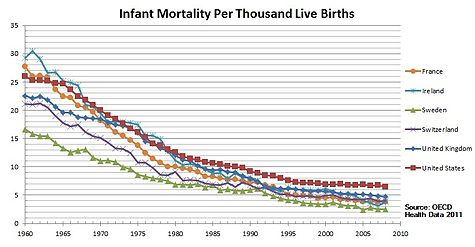Some time ago I received a plea for help from a friend: "I need an author photo for my upcoming poetry book!" Of course I was willing to help. However, author photos have to abide to certain constraints, and though we did get a nice image that we both liked for her book, my friend promised me a rain check: a portrait photoshoot at her house, no limits on creativity. And I knew she meant it because her own creativity knows no limits.
My friend is award winning artist, poet, and KSFR radio host
Lauren Camp, and her new book,
The Dailiness is a collection of poems that just came out this month. So, a few weeks later, I load my softboxes, props, and photography gear in the car and drive to Santa Fe, where Lauren lives with her husband and cats. Their home reflects their artistic spirit: there are blues and purples in the kitchen, yellows and pinks in the living room, greens in the bedroom. It's a feast for the eyes! I start assessing natural light versus softboxes, different backgrounds, different poses. It's not until later that I notice the art on the walls and how well it blends with the colors and warmth of the rooms.
Hanging on a textured yellow wall, is a 40-inch wide portrait of
Thelonious Monk sitting at the piano with his signature hat. On the adjacent wall, deep purple this time, is a mosaic of six square frames showcasing waves of interlacing patterns. As I get closer and take a better look, mesmerized by the patterns and colors, I realize I'm not staring at pictures. I'm staring at fine and detailed threadwork layered on fabric: Monk's fingers, his tie, his hat, the piano's keys--everything is carved out of tiny pieces of fabric threaded together.
In the bedroom, beside a collection of African baskets and New Mexican vases, I find one of Lauren's self-portraits, embroidered with verses from her poems. The green of her bedroom intrigues me the most, so I decide to start from there. Lauren recites poems, she tells me about her visual art, and I take pictures. That's how I learn that the Monk portrait in the living room was part of Lauren’s solo exhibit,
The Fabric of Jazz: A Tribute to the Genius of American Music, which traveled to museums in ten cities from 2004 to 2007, including stops at the American Jazz Museum and the Delta Blues Museum.
So, here she is, telling me how she feels intimidated by my "probing lens," while I'm completely immersed and surrounded by her amazing artwork. How do I render the immense creativity of the person in front of me?
Lauren's poetry is as musical as her voice: words become notes and notes become melodies, like the poem
"A Hum", dedicated to jazz bassist
Charles Mingus:
"Notes that curve and pitch
across the room
a sound that stretches out like wings"
Lauren's words stretch, curve and pitch onto the page, her images turn into sound, and Mingus's rich, meditated tones come to live.
"Why Jazz?" I ask. I'm myself a huge Jazz fan, so I'm always intrigued by other people's reaction to my favorite music genre.
"Jazz has long been my favorite music genre. I like how complex it is, and how much history it pulls into it. But I am also very satisfied by world music -- or, better yet, by the blend of jazz, world and other sounds. That's how "Audio Saucepan" developed... because I wanted a combination that would surprise a listener. Part of my mission with the show is to segue between continents and eras and genres seamlessly."
Audio Saucepan, Lauren's radio show, airs on KSFR every Sunday evening. I ask Lauren how it all started.
"I have been a KSFR host and producer since 2003. For six years, I did a 3-hour show on Monday mornings. The format was strictly jazz, but I slipped in a poem between improvisations each week. Toward the end of that time, I also co-hosted a program called "Poetry Talk" for about a year. In 2010, I transitioned to "Audio Saucepan." I wanted several things: a) to shorten the show and make every word and sound count, b) to incorporate more poetry, and c) to widen the borders of the music beyond jazz to the full borders of the world. The show airs on Sunday evenings, 6-7PM Mountain Time. On Sunday evenings, especially, the station is nearly — if not entirely — vacant. I select the music and poems and engineer the show. It's a full hour of intense multi-tasking. Back before I started at KSFR, I was lucky to have some training at KUNM. This gave me the nuts and bolts of how sound is modulated, how to fade, how to control ambient noise — these sorts of things."

We find a blue scarf and some peacock feathers and together we arrange a somewhat unique headdress. "Your voice is so musical," I say. "Does it come natural to you or did you have some training?"
"I didn't have any voice training. In graduate school, I had one professor (I was studying oral interpretation of literature, a sideline to my main focus of advertising and public relations) who didn't approve of my New York accent, and became determined to help me rid or reduce it."
The
KSFR website calls the show "Gourmet sounds for your ears and mind." Lauren herself defines it "a potluck of reason and tempo, a spicy mash of border-defying jazz, Americana, contemporary classical and world music with interpretive readings and random philosophical fragments." I suddenly realize that this blending of different senses -- flavors, sounds, visuals, music, colors, textures -- is the common denominator in all of Lauren's art.
"My materials," Lauren explains, "are cotton swatches, old portraits, an internalized map of the new freeway, threads of all weights and hues, tools for cutting, splicing, sewing. Lines of poetry (my own and words by others) enter my thoughts as lines and color. A phone call from my father. A drive home. My fingerprint on the door, on the mirror. Art and poetry are twin efforts in my world. One is always stronger, the other meeker — though who and which change regularly. I move back and forth between the creative worlds. After years of working with figures and faces, I began exploring abstraction, depth and surface texture in my art. We encounter fabric every day, either wearing it, sitting on it, opening and closing it. It is tangible — but then, the flip side — it’s unexpected as an art medium. That dichotomy pleases me: the known/unknown of it, and the chance to push it to become something else, to change it, to attempt to control it."
The Dailiness is Lauren's second poetry collection, after the
This Business of Wisdom published by West End Press in 2010. Her next book? A story about her father's childhood as she rediscovers her own heritage.
"My father was born in Baghdad, Iraq in 1935 and emigrated to the U.S. in 1950. He was a political refugee, though he never told us that -- or, in fact, much of anything about his childhood. Imagine?! Coming to a new country all the way on the other side of the world. (He came by himself two weeks after his family because of illness and also a problem in the country... they wanted a strapping 15-year old boy to be part of their army.) But he came... and tried to become American... and leave Iraq behind.
For at least three years, I have been working on a sequence of poems about his childhood. I've had to imagine a lot of it, and to do that, I've read and studied photos, listened to the beautiful oud music that emerges like desert heat from that land. I've asked questions of relatives, and have my own memories of his culture and rituals, my own answers, too. All of this fits into the puzzle that will someday become a book called One Hundred Hungers."
We move to the living room, where a warm light filters in from tall windows and highlights a bright yellow wall. Lauren shows me a long red scarf and wears it over her head. Suddenly, I see her Middle Eastern heritage in her eyes and I feel eager to capture it.
"For more than a decade, I created two-dimensional works — many of them portraits (either of jazz musicians or self-portraits) using only fabric and thread. Lately, I have been making more sculptural, abstract works that mix fabric with other media (paint, glass, wood, found objects, and other things). The work has quieted, I believe, as my poetry has gotten more demanding. The stories I once told only in art now have another medium to emerge from, and so the art becomes a place for meditation."
As we wrap up our photoshoot, I take one last shot of the mirror by the door before packing away my things. Lauren and her husband David give me a tour of their studio, a space that exudes creativity from every wall, and then I drive off. Jazz plays on the car stereo. Our endless New Mexico horizon embraces me on my way home. As I take in the deep blue of the sky, the bright orange of the land, and the harsh light that blends them together, Lauren's words echo in my mind:
"While I’m working I consider moments of intimate precision, and chance. What happens is not entirely my doing, nor am I simply a vessel. I think, letting go through my fingertips. What I love most I capture; and what I fear — space, love — I capture that, too, if I am confident enough."








































